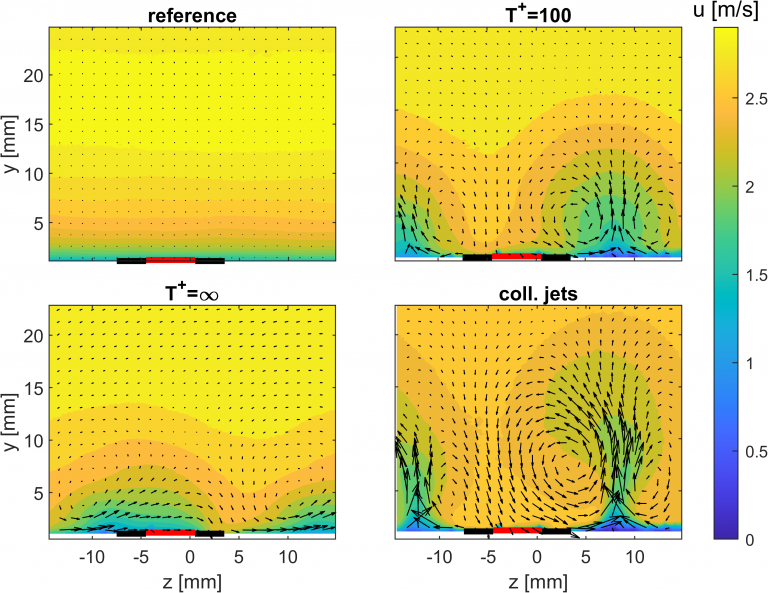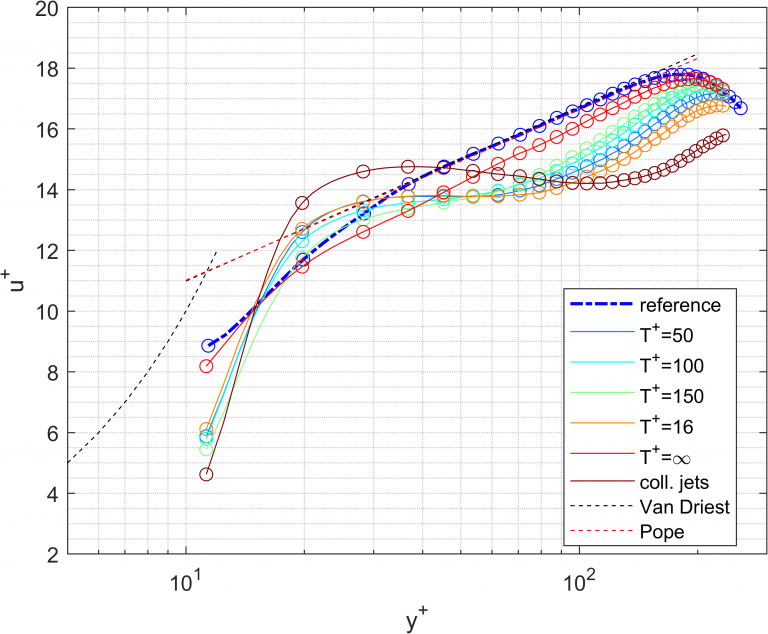Frictional drag typically accounts for about 50% of the total drag experienced by a commercial aircraft or a ship. For this reason skin friction reduction has a significant effect on fuel saving with direct benefits in terms of costs and pollution reduction.
While passive flow control techniques do not require energy expediture, the maximum drag reduction they can cater for caps to 10% for laboratory flows. Active flow control techniques can considerably increase the maximum achievable drag reduction. Furthermore, the control parameters can be adjusted to different flow configurations. As a drawback, these devices consume energy for their operation. This energy expenditure shall be considered and the efficiency of the flow control shall be evaluated.
The group makes use of a broad variety of active flow control devices from pulsed to stationary air jets, from ocscillating walls to plasma jets (see picture below).

The ongoing research considers crosswise oriented plasma jets to generate a flow layer at the wall similar to the Stokes flow generated by crosswise oscillations of the flow exposed walls. Oppositely oriented plasma jets are thus modulated in time, with a period of T+, made non-dimensional with inner layer units, to generate the desired oscillating flow.
Planar wall-parallel PIV (picture above) as well as wall-normal stereo-PIV experiments are carried out in a fully-developed turbulent channel flow to inspect the effect of the operated flow control (see figures below). Moreover, DNS simulations, making use of models of plasma-jets induced body force fields, are also underway and consider a similar flow configuration.


